Cyphostemma cirrhossum
| Botanical Name | Cyphostemma cirrhossum |
|||||||||||
| Family | Vitaceae - The grape family. |
|||||||||||
| Pronunciation | sy-foh-STEM-uh sir-ROH-sum |
|||||||||||
| Common Name(s) |
English: Wild grape
Afrikaans: Droog-my-keel
Afrikaans: Wildedruif; Wildedruiwe
IsiXhosa: intoyomntwana
|
|||||||||||
| Plant Group |
|
|||||||||||
| Plant Size |
|
|||||||||||
| Position |
|
|||||||||||
| General Information |
|
|||||||||||
| Specific Information | Cyphostemma cirrhossum is a robust climber growing from a caudex (a thickened base of a stem from which new leaves and flowering stems arise) which can grow to 30 cm in diameter, with the vines up to five meters long. This creeper has almost hairless, succulent stems and yellowish-green leaves. The fleshy leaves, which fall off in winter, are quite large, shiny and toothed. The thick, fleshy stem and leaves act as water reservoirs in times of drought. The pale, papery bark helps reflect the sun's rays and keep the plant cool. It climbs through the surrounding bush by means of tendrils. The flowers are small but the large bunches of oval-shaped fruits make a striking show as they redden towards the end of summer. |
|||||||||||
| Ad Break | ||||||||||||
| Flowers | ||||||||||||
| Description | small, waxy, with 4 pointed lobes |
|||||||||||
| Season |
|
|||||||||||
| Colour |
|
|||||||||||
| Growth Rate |
|
|||||||||||
| Plant Uses |
|
|||||||||||
| Distribution and Habitat | in the Eastern Cape and KwaZulu-Natal
|
|||||||||||
| Planting Suggestions | Cyphostemma cirrhossum needs a very well drained loamy or sandy soil with some water and plenty of sun. Add river sand and compost to improve drainage in heavy soils and add a little bone meal to the mix before planting. These plants can survive with very little water and will rot and die if over watered. In very wet areas or where frosts are severe, it is wise to keep Cyphostemma cirrhossum in large containers where they can be moved to a sheltered place when necessary. This is a summer growing plant and must be kept dry during the colder winter months. Use organic fertilisers or liquids and completely avoid chemical fertilizers. Photographs of Cyphostemma cirrhossum in the veld and Cyphostemma cirrhossum in flower - courtesy of Kwandwe Private Game Reserve. |
|||||||||||
| Medicinal Uses | No specific data found for this plant. Members of the family Vitaceae, namely Cissus and Cyphostemma, are reportedly used throughout Africa to relieve pain and to heal wounds and fractures. |
|||||||||||
| Ad Break | ||||||||||||


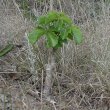
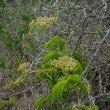
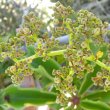
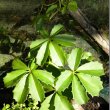
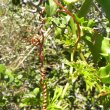
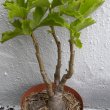
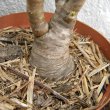
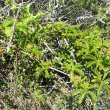


Comments
Cyphostemma cirrhossum
I have what I think is a C. juttae and would very much like to add a C. cirrhossum to my collection of "oddballs"! Any idea where I can obtain one?
Thank you,
Robin
Where to buy Cyphostemma cirrhossum
Hi Robin
The only place I have come across these plants for sale is on ebay. Seeds are sold on biborbuy.
You could also try:
http://www.kambroo.com/succulent_plant_nursery/nursery.php?content=nursery
and
http://www.kokerboom.co.za/index.php
It is sad to realise that 'oddball' succulents from South Africa are far more easily available overseas than they are in South Africa.
Hope you find what you are looking for. Please let me know if you manage to get one - I have so many requests for unusual succulents.
Kind regards
Lorraine
Discuss this plant
Share knowledge, ask a question or give an experience.